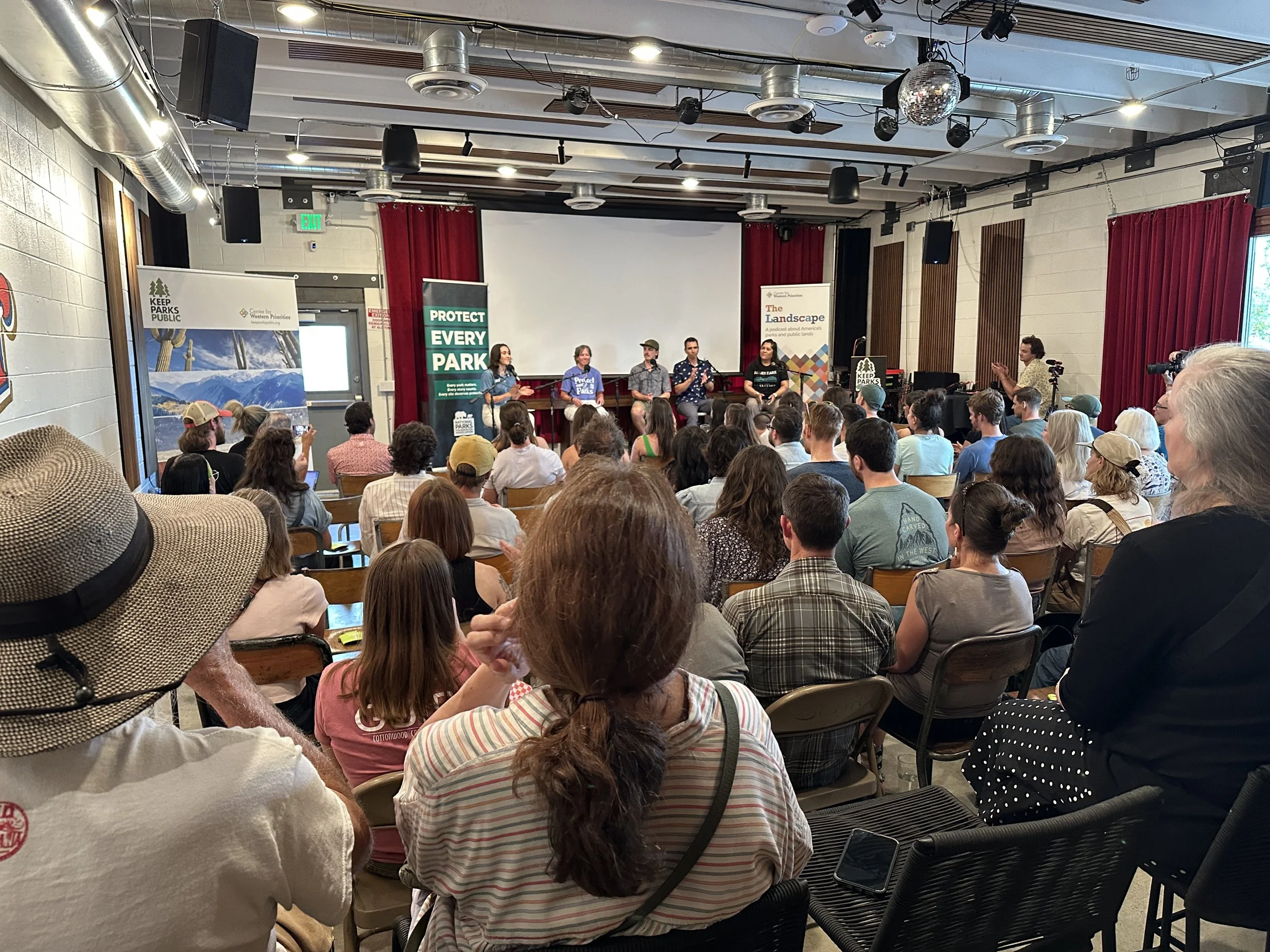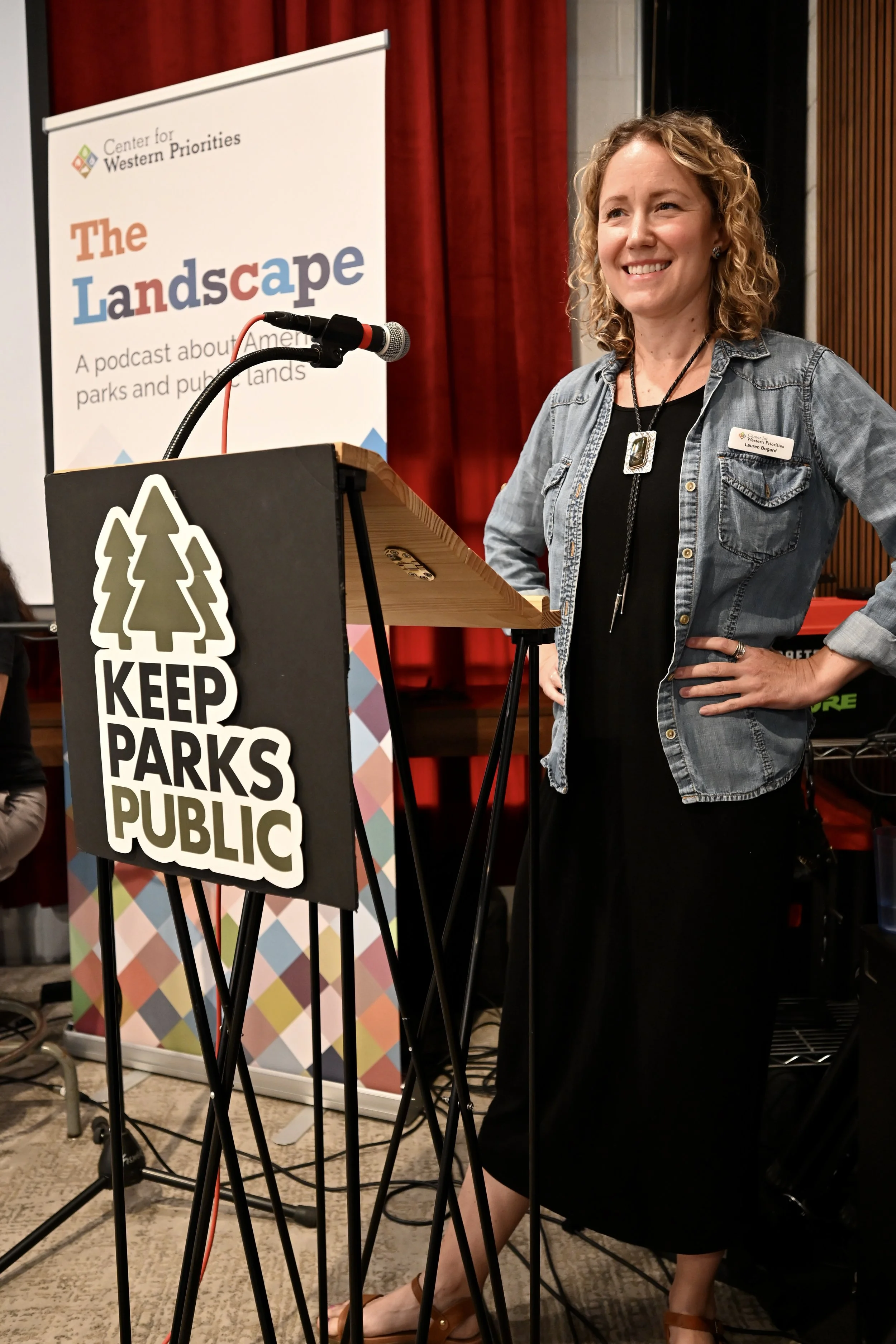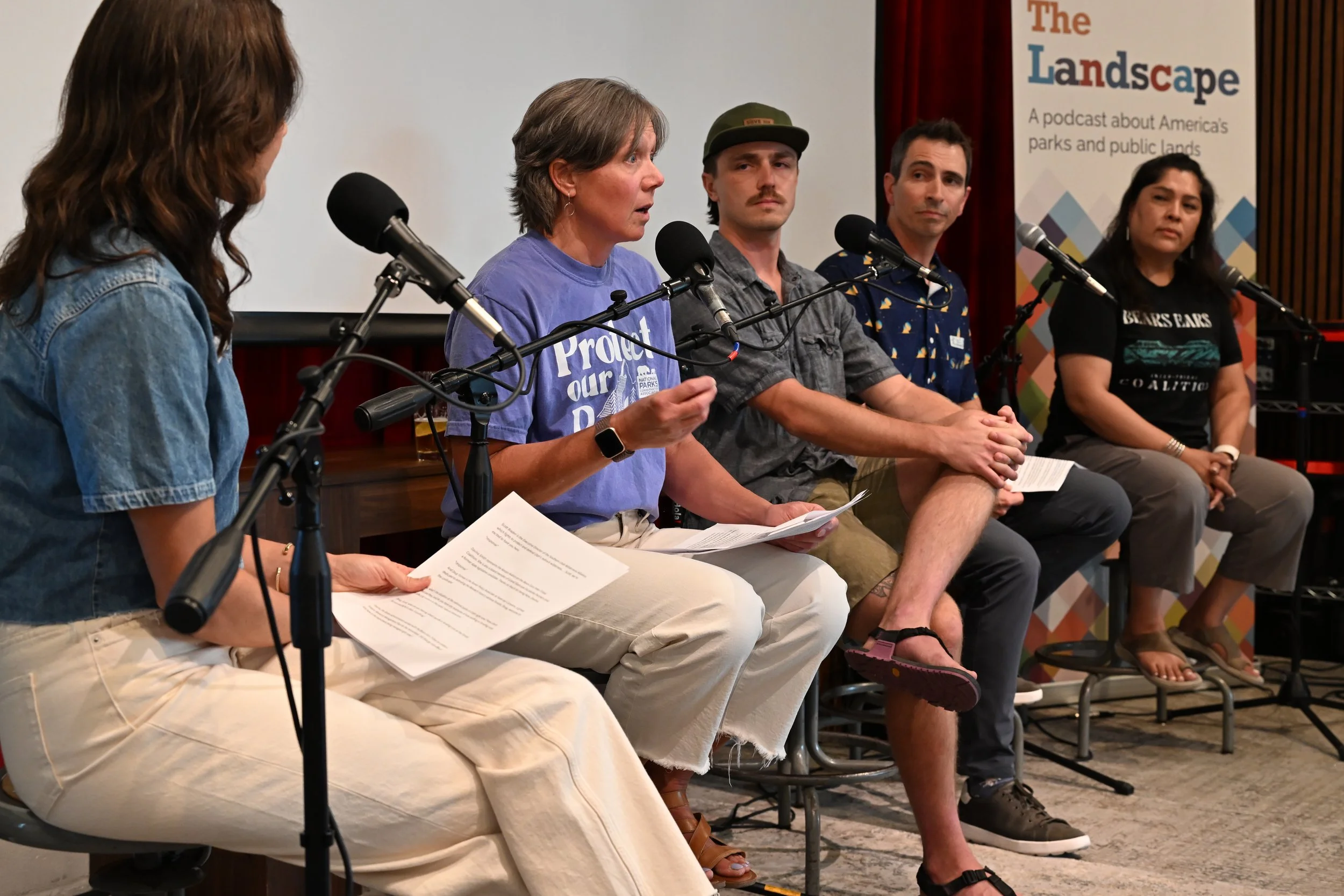Salt Lake City
At a Thursday evening live taping of The Landscape podcast at Fisher Brewing hosted by Center for Western Priorities communications manager Kate Groetzinger, the Keep Parks Public tour highlighted the ongoing threats to Utah’s public lands. In Utah, federal staffing and funding cuts have negatively impacted both national parks and national forests. Park visitors face closures, long lines, and degraded services. Forests risk reduced wildfire readiness and deteriorating infrastructure, all while gateway communities like Moab brace for economic fallout.
“Our national parks are being stretched to the breaking point by staffing cuts and weakened protections. Utah is no exception. From Zion to Dinosaur National Monument, every park matters and every story counts. But when there aren’t enough staff to protect cultural sites or guide visitors safely, we begin to erode everything our national parks were created for. Our parks need more than visitors. They need advocates and Congressional champions now more than ever.”
The very existence of public lands in Utah is threatened by state leaders who are hellbent on taking ownership of public lands through the court system, despite the fact that the state cannot afford to manage them. State lawmakers are also attempting to privatize national public lands, capitalizing on the housing affordability crisis to sell off public lands to private developers and hedge funds. Finally, the health of Utah’s national forests is threatened by the Trump administration’s decision to repeal the roadless rule, which protects nearly 4 million acres of national forest in Utah from logging.
These attacks on our public lands are likely to get worse, as President Trump’s proposed 2026 budget would cut National Park Service funding by 36 percent, or $1.2 billion, and U.S. Forest Service funding by 35 percent, or $1.6 billion. These cuts would lead to a 30 percent drop in National Park Service staff and a 40 percent drop in Forest Service staff, according to the Center for American Progress. Hollowing out the agencies that manage national public lands helps bolster Utah officials’ argument that the federal government cannot adequately manage public lands, making it easier for the state to take control of public lands—which would ultimately lead to a loss of access to public lands across the state.



